If you are a caregiver, you’re probably concerned with keeping your kids healthy and thriving. The challenge of getting your family to eat a balanced diet intensifies when some of them are picky eaters. Every bite counts when raising young ones, and so success depends on steering them towards nutrient dense foods, disguising the taste of vegetables, and masterful negotiation of just one more mouthful.
Economical and easy to make, fruit leathers are a delicious way to get an extra serving of fruit, vegetables, and even medicine, inside little bellies. By selecting ingredients high in fiber, vitamins, and minerals, you create a treat that helps meet their nutrition needs, and naturally addresses common childhood complaints such as indigestion and constipation.
Sweeteners for Herbal Fruit Leather
Another bonus is that homemade fruit leather contains far less sugar than store bought, as it can be made without any added sweeteners. I find that using a tablespoon or two improves both the texture and flavor, while adding a liquid sweetener in the form of an herbal syrup or infused honey gives you the chance to increase the medicinal power of this snack. In the past, I’ve added fennel(Foeniculum vulgare) infused honey because of its affinity for the digestive system.1
Choose Your Fruit
Flavor-wise, fennel pairs nicely with fig, apple, and pear – all high-fiber fruits containing bulk laxatives that gently support bowel function.2 3 Other fruits that make nice leather, and are also rich in fiber, are berries, bananas, and stone fruits. Most any fruit can be used, so don’t be afraid to experiment. While fresh fruit is best, it’s fine to use frozen or canned. Fruit leather even allows for a second chance to use bruised fruit, as well as pulp leftover from making jellies or juicing.
Add Herbal Tea or Juice
In addition to using an herb-infused sweetener, there are several other techniques for boosting the health properties of fruit leather. If working with thicker, more fibrous fruits, I normally add a liquid to thin out my puree. This liquid is sometimes a tea decoction or herb-steeped juice. For this recipe, I’ve listed plain pomegranate juice, but feel free to substitute for any liquid you prefer.
Add Herbal Powder
One other trick is to add finely powdered vegetables or herbs. Favorite powders to use are those made from leafy plants like nettles (Urtica dioica); this herb is high in minerals and a gentle laxative, with a mild flavor that is easy to disguise.4
Another one of my go-to herbs is hibiscus (Hibiscus sabdariffa). This African native is a great plant ally for tummy issues as it helps with nausea and promotes intestinal peristalsis.5 6 A high vitamin C content adds a pleasantly tart flavor, and its signature red coloring disguises less appealing vegetables and herbs.7
I usually combine different powders, adding a total of 2 1/2 teaspoons of powder mix to each batch of herbal fruit leather. You can add a little over a tablespoon before it compromises the leather texture, but just be sure to consider the palatability of all flavors when determining the amount of powder to add.
Drying Equipment
To make my herbal fruit leather, I use an electric dehydrator and silicone-lined trays. Alternatively, you can dry fruit leather in the oven using baking sheets lined with plastic wrap, silicone mats, or parchment paper.
With either method, you’ll want to bake at about 135°F/57°C. If neither oven or dehydrator is available, sun drying is an option. When the weather turns hot and dry, I make fruit leather by leaving a cookie sheet on my car dashboard for a day or two.
Herbal Fruit Leather Recipe
Follow these simple directions to make herbal fruit leather. This is an herbal treat that even the pickiest of eaters will enjoy.
What you’ll need…
- 1 cup strawberries
- 1 cup chopped mango
- 1 banana
- 1/2 cup blueberries
- Lemon juice, as needed
- 1/4 cup applesauce
- 2 teaspoons nettle leaf powder
- 1/4 teaspoon hibiscus powder
- 2 ounces pomegranate juice
- Optional: 2 tablespoons honey (or other liquid sweetener)
1. If using fresh fruit, remove rough peels. Add 1 teaspoon of lemon juice for each cup of light colored fruit (to reduce oxidation).
2. Place all the ingredients in a blender or food processor.
3. Blend until smooth (to the consistency of commercial baby food). Thin with juice or tea if necessary.
4. Use a spatula to spread the puree on parchment paper or a silicone mat to 1/8 inch thick.
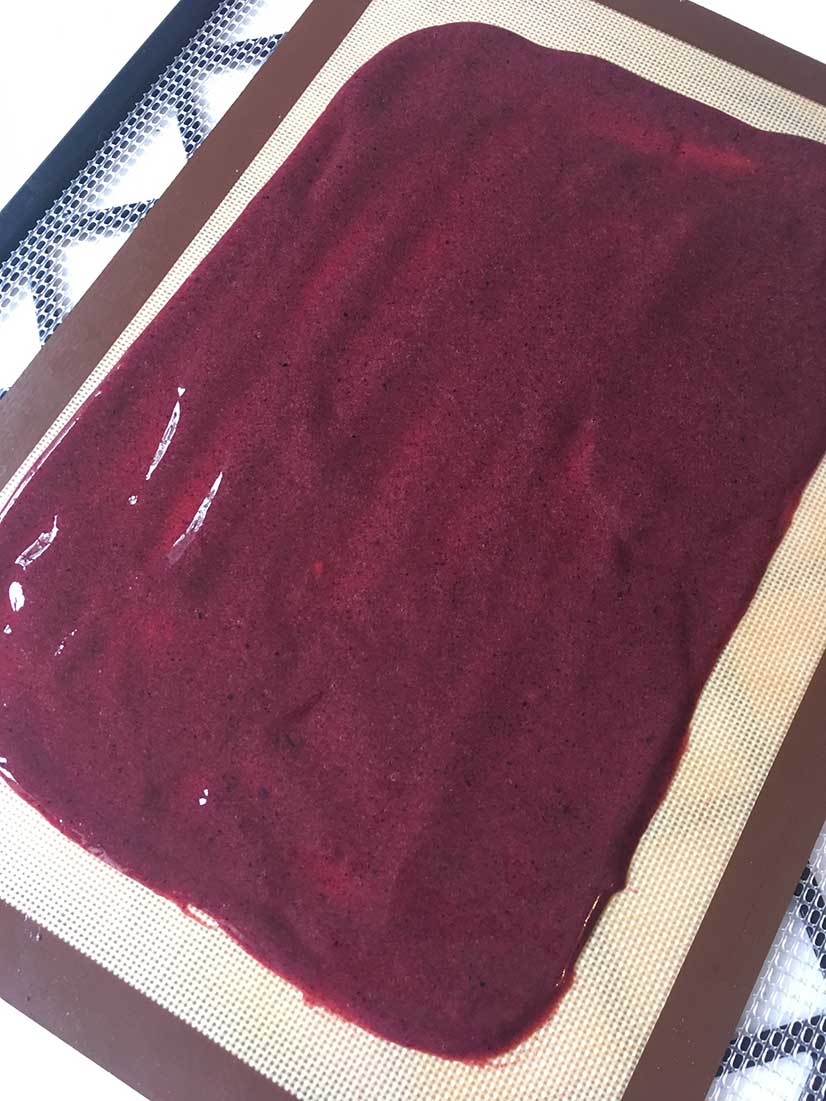

5. Dehydrate at 135°F/57°C until the texture is pliable and not sticky. The rate of drying will depend on climate. (During the summers here in southern California, my leathers take about 2 1/2 hours to dry in the dehydrator.)
6. While still warm, roll and cut the leather into pieces. If using a silicone mat or plastic, peel the leather off carefully and roll it in parchment paper. If drying on parchment paper, roll the leather in the paper and cut.
7. Store the leather in an airtight container in a cool, dark location. Fruit leather will keep for a month at room temperature or up to a year in the freezer.
Now we’d love to hear from you.
Do you make fruit leather?
What are your favorite fruit combinations? Have you ever incorporated herbs?
Let us know in the comments below.


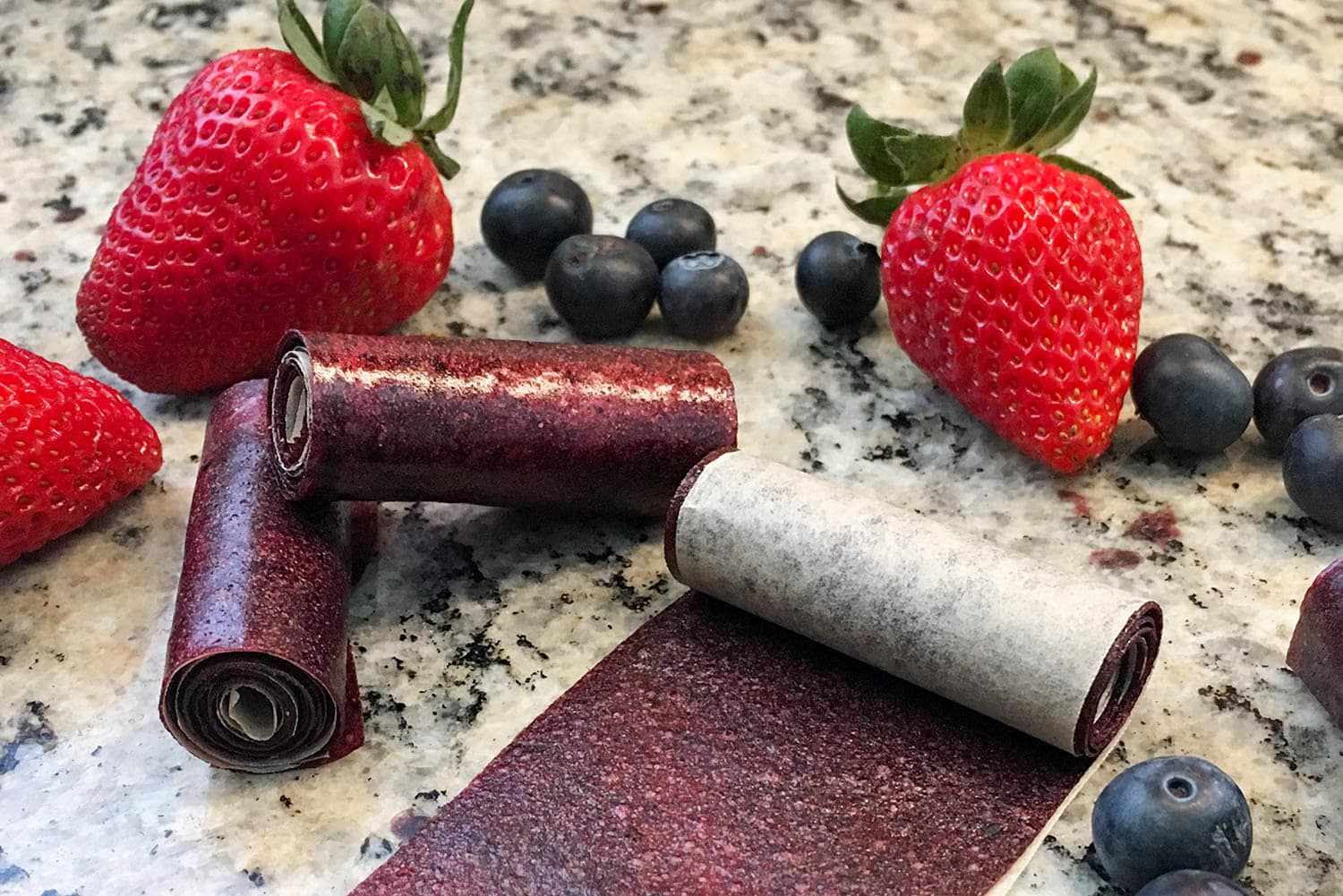
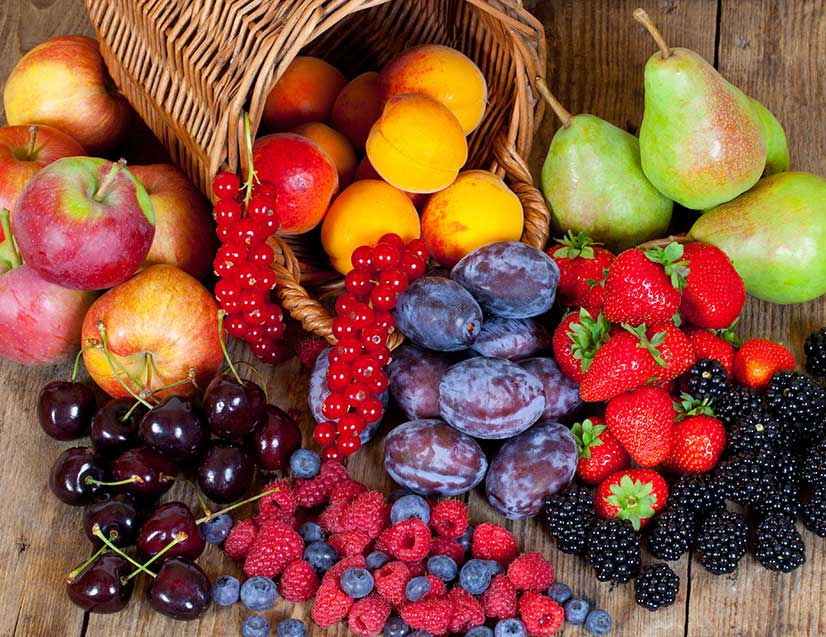
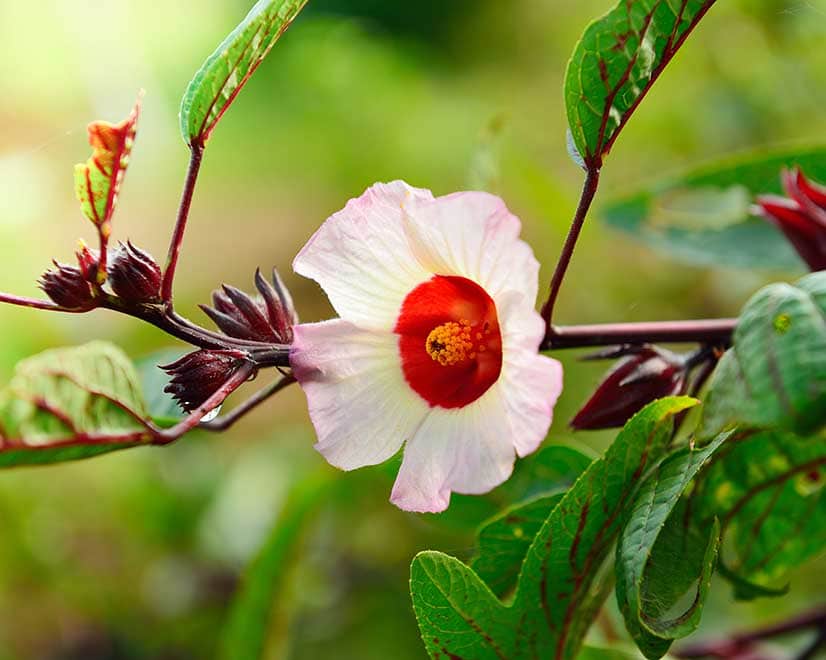
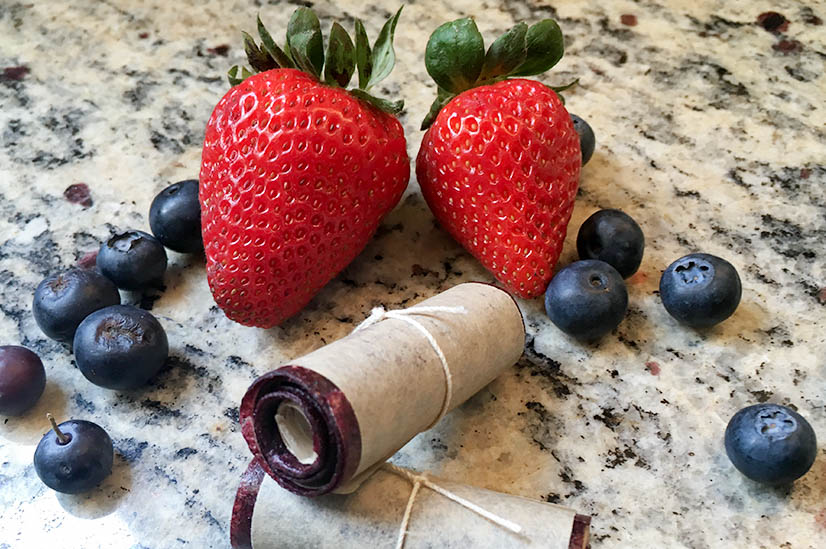
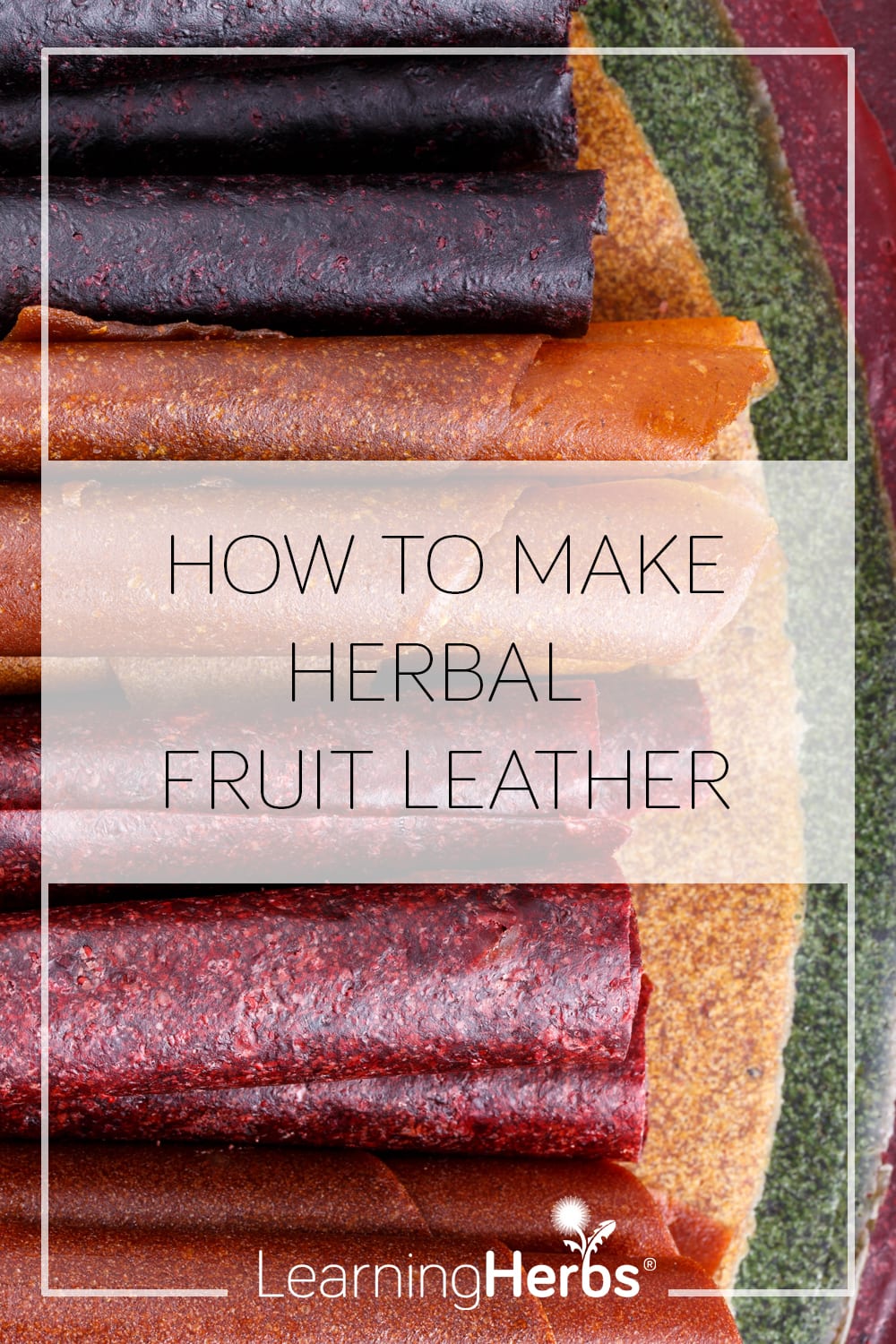
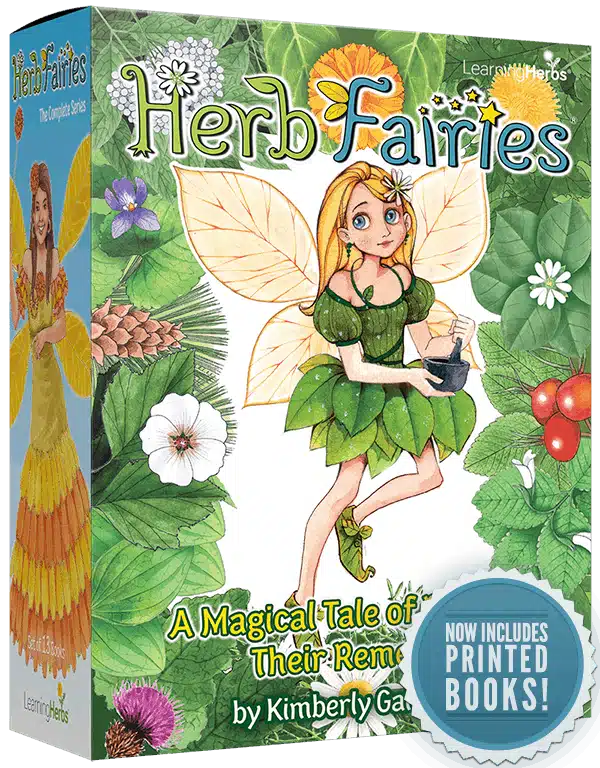





I don’t have a dehydrator. How can I make the fruit leather?
I don’t have a dehydrator, either. I used our “toaster oven”, which is electric, and kept the heat as low as possible. I also put a tray of it in my car. That ended up going in the big gas oven after baking enchiladas — once the temp had dropped. It all turned out quite tasty!
the article said you can use an oven also……re read the part under drying equipment. i
If using the oven method to dry, would a ‘convection heat’ setting be appropriate and/or shorten the drying time?
Gail, yes, I found the convection setting helped shorten the time by quite a bit! I kept it really low (125-135 degrees F).
How do you make nettle powder?
I dry nettle leaves that I collect in the spring, whiz in the blender, and sift with a fine mesh strainer. You can also purchase ready-to-use powdered herbs from sites such as Starwest Botanicals.
When I made this recipe, I tossed my dried nettle leaves (pretty compact from the end of a jar) into the Vitamix with everything else. You can neither see them nor taste them. The recipe is tasty, Sade! :)
Did you dehydrate your nettle leaves? (I thought they had to be boiled to be consumed. I’m very new at using nettles in the kitchen and have only tried nettle tea, so I would truly like to learn more.)
Hello hsmom!
When you are going to eat fresh nettles, yes, you need to boil them or otherwise cook them. Drying them is also safe. I dry mine in paper bags or laying on screens. Other people dry them in a dehydrator.
Here’s a recipe with further information on nettles for you:
https://learningherbs.com/remedies-recipes/nettle-soup/
You are recommending that people spread their acidic fruit slurry on plastic wrap? =O Parchment paper, yes. Silicone, yes. But toxic plastic wrap….certainly not. :(
Thank you for your concern, Gwenda. Sade gave a variety of options for everyone. I chose my favorite, as you and each person is free to do. :)
I made fruit leather for the first time this year. I used strawberries, a little lemon juice, and a little honey. The leather turned out great. For the second batch, I didn’t have enough strawberries so I added mulberries. It was good too. Now I’d like to try adding some herbs. Thanks for the ideas.
Thank you for sharing your fruit leather experiences with us! ?
can,t get to download for to print of .
It works for me. Maybe try again?
Thankfully I still have my dehydrator and was able to make this. The recipe is tasty and I appreciate all the great info packed into the article!
I’m glad you enjoyed it!
I have the same dehydrator as in the photos in this article. Does this one recipe actually make 4 trays? I have silicon sheets that fit the full tray so I suppose it would be 3 full trays if the recipe is true to the photo.
Hi, i’ve been making fruit leathers since last year. As you mentioned, it is very healthy choice to consume fruits not leaving the fibers behind. We have plum tree in our garden, it yields many fruits, so we have tried every different way to consume the fruits such as, making jams, pulpy fruit juices, canning. However, i think the best way to preserve the fruits is dehydrating them as fruit rolls. Because, you can eat them whenever you want,especially if you preserve them in refrigrator or cool and dry place.Also, the taste and odor is preserved with this method. An extra advantage is, you can produce without and adding extra sugar! This is a very good advantage nowadays, many diet programs are avoiding carbonhydrates.
Plum can be mixed with apricot and peach. The taste and smell is wonderful! I live in Mediterranean climate, although summers are very hot and humid, i prefer dehydrator for producing every kind of dehydrating. For the fruit roll production, i recommend tray style dehydrators, the other type is better for whole fruit dehydrating i think.
I usually not add sugar, but sometimes add honey to make it more healthy and sticky and humid. Because, stickiness makes it smoother. Especially old family members all have teeth problems you know, if it is too dry, then it is hard to chew!
An extra experience of me i want to tell here,but not fruit roll, is dried tomatoes. Middle sized cherry tomatoes are cut halves. Then, they are dipped in water+ vinegar+salt+lemon juice mixture. Then, put them on the trays. Dehydrate them. The colour and taste all is preserved with this method and also very healthy without using and chemical preservatives. You can put them (after cooling), in a glass jar into the refrigrator. Whenever you want to eat, just before you put them in hot water for a while, then into the olive oil,thyme,black cumin mixture for a delicious Mediterranean style breakfast!